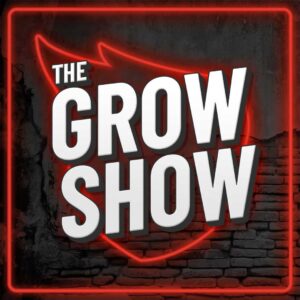Employee turnover is one of the most pressing challenges facing Managed Service Providers (MSPs) today. With the IT industry evolving rapidly and competition for skilled talent intensifying, retaining top performers is not just a nice-to-have — it’s a critical business imperative. High turnover rates disrupt client relationships, inflate recruitment costs, and slow down growth momentum.
In this article, we’ll explore actionable strategies MSP leaders can implement to reduce employee turnover. These approaches are grounded in data, real-world examples, and industry best practices designed to create a workplace where talent thrives and stays.
Contents
- 1 Understanding the Root Causes of Turnover in MSPs
- 2 Building a Strong Employer Brand to Attract and Retain Talent
- 3 Implementing Competitive Compensation and Benefits Packages
- 4 Creating Clear Career Pathways and Development Opportunities
- 5 Fostering a Positive and Inclusive Workplace Culture
- 6 Optimizing Management Practices for Retention
- 7 Leveraging Technology to Support Employee Retention
- 8 Measuring and Monitoring Turnover to Drive Continuous Improvement
- 9 Conclusion: Commitment to Talent Retention as a Growth Strategy
Understanding the Root Causes of Turnover in MSPs
Before diving into solutions, it’s essential to understand why employees leave MSPs in the first place. According to a 2023 report by CompTIA, the IT services sector experiences an average annual turnover rate of 20-25%, significantly higher than the national average across all industries.

Key factors driving this turnover include:
- Burnout and Workload Pressure: MSP employees often juggle multiple clients and urgent tickets, leading to chronic stress. The fast-paced environment can result in long hours and a feeling of being perpetually on-call, which can take a toll on mental health and overall job satisfaction.
- Limited Career Growth: Many MSPs lack structured career paths, causing employees to seek advancement elsewhere. Without clear opportunities for professional development or mentorship, talented individuals may feel stagnant in their roles, prompting them to explore positions at organizations that offer more robust career progression.
- Compensation and Benefits Gaps: Competitive pay and benefits are critical, especially as tech talent is in high demand. MSPs often struggle to match the compensation packages offered by larger tech firms, which can lead to a talent drain as skilled professionals seek better financial incentives and comprehensive benefits.
- Lack of Recognition and Engagement: Feeling undervalued or disconnected from company goals erodes loyalty. When employees do not receive regular feedback or acknowledgment for their contributions, it can diminish their motivation and commitment to the organization.
- Poor Management and Communication: Ineffective leadership and unclear expectations contribute to dissatisfaction. A lack of open communication channels can lead to misunderstandings and a sense of isolation among team members, further exacerbating turnover rates.
Addressing these root causes requires a holistic approach that targets both organizational culture and operational practices. For instance, implementing regular check-ins and feedback loops can foster a sense of belonging and ensure that employees feel heard. Additionally, investing in training programs and career development workshops can provide employees with the skills and knowledge they need to advance within the company, ultimately enhancing retention. Furthermore, creating a supportive work environment that prioritizes mental health and work-life balance can significantly reduce burnout and improve overall job satisfaction.
Moreover, MSPs can benefit from establishing recognition programs that celebrate employee achievements and milestones. This not only boosts morale but also reinforces a culture of appreciation, making employees feel valued and connected to the company’s mission. By actively engaging with employees to understand their needs and aspirations, MSPs can cultivate a more loyal workforce that is less likely to seek opportunities elsewhere. In this competitive landscape, focusing on employee satisfaction and retention is not just beneficial for the workforce but also crucial for the long-term success of the organization.
Building a Strong Employer Brand to Attract and Retain Talent
Crafting a Compelling Mission and Values
Employees today want more than just a paycheck; they want to be part of something meaningful. MSPs that clearly articulate their mission and core values create a sense of purpose that resonates with their teams. This alignment fosters deeper engagement and reduces turnover.
For example, an MSP that emphasizes customer success, innovation, and continuous learning can attract professionals who value growth and impact. Communicating these values consistently — from job postings to everyday conversations — reinforces a shared identity. Furthermore, integrating these principles into performance reviews and recognition programs can further solidify their importance, ensuring that employees feel their contributions align with the organization’s overarching goals. By doing so, MSPs not only enhance employee satisfaction but also cultivate a workforce that is intrinsically motivated to strive for excellence.
Showcasing Culture Through Authentic Storytelling
Beyond mission statements, showcasing your company culture through real stories and testimonials can differentiate your MSP in a crowded talent market. Use your website, social media, and recruitment materials to highlight employee experiences, team achievements, and community involvement.
Transparency about challenges and how your MSP supports its people builds trust and sets realistic expectations. Candidates and current employees alike appreciate authenticity, which strengthens retention. Additionally, consider creating video content that features employees sharing their personal journeys within the company. This not only humanizes your brand but also provides potential hires with relatable insights into the day-to-day experiences and growth opportunities available. Engaging storytelling can also extend to showcasing your commitment to diversity and inclusion, illustrating how varied perspectives contribute to a richer workplace culture. By weaving these narratives into your employer branding strategy, you can create a compelling image that attracts top talent and fosters loyalty among your current workforce.
Implementing Competitive Compensation and Benefits Packages
Benchmarking Salaries Against Industry Standards
Competitive pay is foundational to retention. MSP leaders should regularly benchmark salaries against regional and industry standards using data from sources like the Robert Half Technology Salary Guide or the CompTIA IT Industry Outlook.
Offering salaries below market rates sends a clear signal that the company undervalues its employees, increasing the risk of attrition. Conversely, paying competitively demonstrates commitment to employee worth and reduces turnover. Moreover, it’s essential to consider not just the base salary but also the total compensation package, which may include bonuses, stock options, and other financial incentives. Regularly revisiting these benchmarks ensures that your compensation strategy remains aligned with market trends and employee expectations, fostering a culture of trust and loyalty.
Designing Benefits That Matter
Benefits extend beyond health insurance and 401(k) plans. Modern MSP employees prioritize flexibility, wellness programs, professional development stipends, and mental health resources.
For instance, providing remote work options or flexible schedules can significantly improve work-life balance, a top factor in retention. Additionally, investing in training and certifications not only upskills your workforce but also shows your commitment to their career growth. Furthermore, incorporating wellness initiatives, such as gym memberships or mindfulness workshops, can enhance employee satisfaction and productivity. Companies that actively promote a healthy work environment often see a decrease in absenteeism and an increase in overall morale, creating a more engaged and motivated workforce. Tailoring these benefits to the specific needs and preferences of your employees can further strengthen their connection to the organization, making them feel valued and understood.
Creating Clear Career Pathways and Development Opportunities
Establishing Transparent Promotion Criteria
One of the most common reasons MSP employees leave is the lack of visible advancement opportunities. MSPs that establish transparent criteria for promotions and career progression empower employees to set goals and visualize their future within the company.

Documenting these pathways — whether technical ladders, management tracks, or hybrid roles — provides clarity and motivation. Regular career discussions between managers and employees ensure alignment and support. Additionally, incorporating feedback mechanisms allows employees to voice their aspirations and concerns, creating a more inclusive environment. By fostering a culture of open dialogue, organizations can better understand the unique ambitions of their workforce, tailoring development programs that resonate with individual career goals.
Investing in Continuous Learning and Certification
The IT landscape is dynamic, and MSP employees crave opportunities to stay current. Offering access to certifications like CompTIA Network+, Microsoft Certified: Azure Fundamentals, or Cisco CCNA not only enhances skills but also increases job satisfaction.
Encouraging knowledge sharing through internal workshops or lunch-and-learns fosters a culture of growth. This investment signals that the company values employee development, which directly correlates with retention. Furthermore, establishing mentorship programs can amplify this learning experience, pairing less experienced employees with seasoned professionals who can provide guidance and insight. Such relationships not only enhance technical skills but also build a sense of community and belonging within the organization, making employees feel more connected and invested in their work.
Fostering a Positive and Inclusive Workplace Culture
Prioritizing Employee Recognition and Feedback
Recognition is a powerful retention tool. MSPs that implement regular, meaningful recognition programs — whether through peer-to-peer shoutouts, performance bonuses, or company-wide acknowledgments — create a culture where employees feel valued. This sense of appreciation can significantly boost employee morale and motivation, leading to increased productivity and job satisfaction. Moreover, recognizing achievements, both big and small, can inspire others to strive for excellence, creating a ripple effect throughout the organization.
Equally important is establishing open channels for feedback. Frequent one-on-one meetings and anonymous surveys help leadership identify issues early and demonstrate responsiveness, which builds trust. When employees feel that their voices are heard and their opinions matter, they are more likely to engage actively in their roles. Additionally, incorporating feedback into decision-making processes not only enhances transparency but also empowers employees, making them feel like integral parts of the organization’s journey.
Encouraging Team Collaboration and Social Connection
MSPs can be high-pressure environments, but fostering camaraderie helps reduce stress and improve morale. Organizing team-building activities, virtual coffee breaks, or interest-based groups encourages relationships beyond work tasks. These informal interactions can lead to stronger bonds among team members, which can translate into better collaboration and communication in day-to-day operations. Furthermore, when employees connect on a personal level, they are more likely to support each other during challenging times, creating a resilient team dynamic.
Inclusive events that celebrate diversity and promote belonging contribute to a supportive atmosphere where employees are more likely to stay. By recognizing various cultural backgrounds and encouraging participation in events such as potlucks, heritage months, or community service days, organizations can cultivate a sense of unity and respect. This not only enriches the workplace culture but also enhances creativity and innovation, as diverse perspectives lead to more comprehensive problem-solving and idea generation. Ultimately, a workplace that values inclusivity is one where every employee can thrive and contribute their best work.
Optimizing Management Practices for Retention
Training Managers as Coaches and Leaders
Managers are the frontline influencers of employee experience. MSPs that invest in leadership training equip managers with skills in communication, conflict resolution, and motivation.
Effective managers act as coaches, helping employees navigate challenges, recognize achievements, and align personal goals with company objectives. This approach reduces frustration and turnover. By fostering an environment where feedback is encouraged, managers can create a culture of continuous improvement. Regular one-on-one meetings can serve as a platform for employees to voice their concerns and aspirations, allowing managers to tailor their coaching to individual needs. Furthermore, training programs that emphasize emotional intelligence can enhance a manager’s ability to empathize with their team, ultimately leading to stronger relationships and a more cohesive work environment.
Setting Clear Expectations and Providing Resources
Unclear job roles and insufficient resources are common causes of employee dissatisfaction. MSP leadership should ensure that every team member understands their responsibilities and has the tools needed to succeed.
Regularly reviewing workloads and redistributing tasks can prevent burnout. Additionally, leveraging automation and efficient ticketing systems frees employees to focus on higher-value work, enhancing job satisfaction. To further support employees, MSPs should consider implementing comprehensive onboarding processes that clearly outline expectations and provide necessary training from day one. This not only sets the tone for the employee’s journey but also instills a sense of belonging and purpose. Furthermore, fostering an open-door policy encourages employees to seek help when needed, ensuring that they feel supported and valued in their roles. By investing in both clarity and resources, organizations can cultivate a motivated workforce that is less likely to seek opportunities elsewhere.
Leveraging Technology to Support Employee Retention
Utilizing Employee Engagement Platforms
Modern HR technology provides data-driven insights into employee sentiment and engagement. Platforms like 15Five or Culture Amp enable anonymous feedback collection, pulse surveys, and performance tracking.

MSPs that adopt these tools can proactively address issues before they escalate, tailoring retention strategies to real-time needs. By analyzing trends in employee feedback, organizations can identify potential areas of concern, such as workload balance or team dynamics, and implement targeted interventions. This not only fosters a culture of open communication but also empowers employees to feel heard and valued, which is crucial for long-term retention.
Moreover, these platforms often include features that promote recognition and reward systems, allowing peers and managers to acknowledge accomplishments in real-time. Such recognition can significantly boost morale and motivation, creating a positive feedback loop that enhances overall workplace satisfaction. As employees see their contributions celebrated, they are more likely to stay engaged and committed to the organization’s goals.
Streamlining Onboarding and Training with Learning Management Systems
First impressions matter. A structured onboarding process supported by a Learning Management System (LMS) accelerates new hire productivity and integration.
Interactive training modules, clear documentation, and mentorship programs reduce early turnover by helping employees feel confident and connected from day one. A well-designed LMS can offer personalized learning paths that cater to the unique needs of each employee, ensuring that they acquire the necessary skills at their own pace. This adaptability not only enhances the learning experience but also promotes a sense of ownership over their professional development.
Additionally, incorporating gamification elements into training can make the onboarding process more engaging and enjoyable. By using leaderboards, badges, and interactive quizzes, organizations can create a fun learning environment that encourages participation and retention of knowledge. As new hires progress through their training, they can build relationships with colleagues, fostering a sense of community and belonging that is vital for employee retention. This collaborative atmosphere not only aids in knowledge transfer but also solidifies the new employee’s commitment to the organization, making them feel like an integral part of the team from the outset.
Measuring and Monitoring Turnover to Drive Continuous Improvement
Reducing turnover is an ongoing effort. MSPs should establish key performance indicators (KPIs) such as turnover rate, employee satisfaction scores, and average tenure to track progress.
Regularly analyzing exit interview data reveals trends and areas for improvement. Sharing these insights transparently with leadership and teams fosters accountability and continuous refinement of retention initiatives.
In addition to traditional metrics, incorporating qualitative feedback from current employees can provide a more nuanced understanding of workplace dynamics. Conducting regular pulse surveys can help gauge employee sentiment and identify potential issues before they escalate. These surveys should focus on various aspects of the work environment, including management effectiveness, career development opportunities, and work-life balance, allowing organizations to proactively address concerns and enhance overall employee engagement.
Furthermore, benchmarking turnover rates against industry standards can offer valuable context for evaluating performance. By understanding how their turnover compares to similar organizations, MSPs can identify best practices and tailor their strategies accordingly. Engaging with industry networks or utilizing third-party research can provide insights into innovative retention strategies that have proven successful elsewhere, enabling organizations to stay competitive in attracting and retaining top talent.
Conclusion: Commitment to Talent Retention as a Growth Strategy
In the fiercely competitive MSP landscape, reducing employee turnover is not merely about saving costs — it’s about building a resilient, high-performing organization. By understanding the underlying causes of attrition and implementing comprehensive strategies that address compensation, culture, career development, and management, MSPs can cultivate a loyal workforce.
This commitment to talent retention translates directly into better client service, stronger business continuity, and sustainable growth. The time to act is now — invest in your people, and your MSP will thrive.
Learn how our MSP recruiting services can help you exceed your business growth expectations.

Madison Hendrix
Madison has worked in SEO and content writing at Abstrakt for over 5 years and has become a certified lead generation expert through her hours upon hours of research to identify the best possible strategies for companies to grow within our niche industry target audiences. An early adopter of AIO (A.I. Optimization) with many organic search accolades - she brings a unique level of expertise to Abstrakt providing helpful info to all of our core audiences.
- Madison Hendrix#molongui-disabled-link
- Madison Hendrix#molongui-disabled-link
- Madison Hendrix#molongui-disabled-link
- Madison Hendrix#molongui-disabled-link

Madison Hendrix
Madison has worked in SEO and content writing at Abstrakt for over 5 years and has become a certified lead generation expert through her hours upon hours of research to identify the best possible strategies for companies to grow within our niche industry target audiences. An early adopter of AIO (A.I. Optimization) with many organic search accolades - she brings a unique level of expertise to Abstrakt providing helpful info to all of our core audiences.
- Madison Hendrix#molongui-disabled-link
- Madison Hendrix#molongui-disabled-link
- Madison Hendrix#molongui-disabled-link
- Madison Hendrix#molongui-disabled-link







